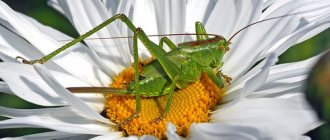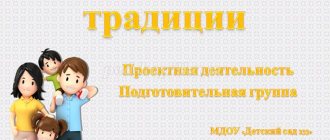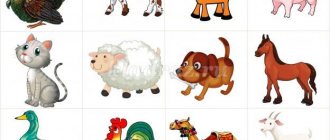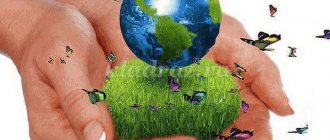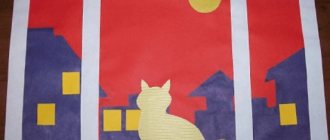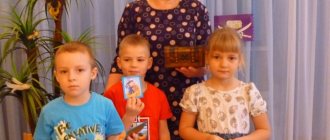Pedagogical project at the preschool educational institution “Pets”
- April 28, 2016
Conference “Project activity in an educational institution - 2016”
Nomination “Pedagogical project in a preschool institution”
Currently, not everyone has the opportunity to keep pets in the house. And love for animals should be fostered in children from an early age. Therefore, the project allows children to expand their knowledge about animals kept at home; about their lifestyle, habits, characteristic external signs, to accumulate for the child personal experience in understanding the world around him.
Project passport
Project type : educational and creative.
Project type:
- by time: short-term (1 month),
- by number of participants: group,
- project participants: children, parents of students, teachers.
goal : Formation of ideas about pets among younger preschoolers.
Tasks:
- develop cognitive communication with adults;
- encourage cognitive activity;
- support the desire for positive actions and responsibility for your pet;
- develop speech activity with peers and adults.
Problem
Many of the guys in the group have pets, and they often talked about their pets. Maxim was very interested in these stories; he had long dreamed of having a pet. But I didn’t know who was better to choose (a dog, a cat, a hamster, a rabbit or fish), how to care for them and feed them. Together with the guys, we decided to help him choose a pet, telling him in detail about each animal.
Project implementation stages:
Stage 1 – Preparatory
Discussing the problem with students; searching for ways to solve a problem, discussing possible options, looking at illustrations, searching for additional information on the Internet. Selection of literature, games.
Stage 2 – Main
- Discussion of the questions “What kinds of animals are there? What is their lifestyle, habits, characteristic external signs.”
- Productive activities with children (in drawings, modeling).
- Construction, didactic games, theatrical activities.
- Consultations for parents, production of sliding folders.
- Competition of joint works of parents and children “The funniest, cutest animal.”
Stage 3 – Final
- Summing up the project.
- Production of the newspaper “Our Favorites”, presentation of the project.
Project progress
Stage 1 – preparatory
- Children's survey "Pets - what are they like"?
- Parent survey: “Does your family have pets? Which?"
- Questioning parents “Are animals needed in the house?”
- Selection of literature.
- Selection of finger, didactic and outdoor games
- for children and parents. Creation of a card index of outdoor games.
Stage 2 – main
Working with parents:
- Consultations for parents “Pets in a child’s life”, “Communication with a pet”, “Animals are the best therapists for you and your children.”
- Folders - moves (poems, riddles, nursery rhymes, tongue twisters, didactic games, questions and assignments, proverbs and sayings).
- Recommendations: “We read to children at home about animals” (list of literature).
- Competition "The funniest, cutest animal."
- Making crafts by adults together with the child in various ways: origami, applique, from waste material, etc.
Work with children:
- Conversations: “Pets”, “About your pet” (about appearance, lifestyle, nutrition, accommodation, caring for pets).
- Looking at photographs and illustrations of domestic animals and their babies.
- Observations on a walk: “Cats”, “Dogs”.
- Watching a turtle in the Green Room.
- Riddles about pets.
- Learning and reading poems about animals.
- Reading and memorizing tongue twisters and nursery rhymes.
- Compiling a descriptive story based on photographs “My favorite.”
Games
- Finger: “Bull”, “Cats and Mouse”, “Piglets”, “Two Little Goats”.
- Didactic: “Who says what”, “Who eats what”, “The third odd one”, “Favorite children”, “Name the animal”, “Whose baby”, “In the village?”, “Who is the odd one out?”, “Who does what?” is it feeding?”, “Who is screaming?”, “Find the baby,” “Pets.”
Role-playing games and theatrical activities
Outdoor games: “Cat and Mice”, “Sparrows and the Cat”, “Mother Hen and Chicks”, “Horses”, “Vaska the Cat”, “The Goat Jumps Along the Path”, “Cat with Kittens”.
Physical school, “Cat”, “Goat”, “Cow”.
Artistic and creative activities
Drawing: Coloring pages (cat, dog, rabbit, horse, pig, cow, goat).
Modeling “Bowl for cats”, “Kitty”.
Games with construction sets: “Horse Corral”, “Dog House”.
Stage 3 – final
- Photo exhibition “My Pets”.
- Exhibition of drawings and coloring books “Pets”.
- Parents and children working together to design a newspaper
- "Our favorites."
- Presentation of the project “How I love my pet.”
Conclusions on the project
Thus, our project contributed to:
- involving children, parents and teachers in active work;
- helping Maxim in choosing a pet;
- development of cognitive communication with adults;
- encouraging cognitive activity;
- maintaining the desire for positive actions and responsibility for the pet;
- development of speech activity with peers and adults, emotional responsiveness.
Author: Evgenia Olegovna Kireeva, Nadezhda Aleksandrovna Aleshkina, teachers of the second junior group of the MBDOU Child Development Center - kindergarten No. 2 “Friendly Family”, Sarov.
Project "Our Pets"
Project "Our Pets"PROJECT TYPE: short-term
GROUP: Senior group No. 1
IMPLEMENTATION DATES: November 16-20
PROJECT PARTICIPANTS: children, parents of pupils, teachers
FINAL EVENTS: Design of a photo newspaper «
Our pets"
INTEGRATION OF EDUCATIONAL AREAS:
Cognitive development, speech development, social-communicative, artistic-aesthetic, physical
RELEVANCE
It's hard to imagine our life without pets. We are used to four-legged friends. They live nearby, give us their affection, warmth, affection, inspiring gratitude and kindness in our hearts. Therefore, developing a caring and caring attitude towards animals is of great importance in a child’s life. The animal world is extremely attractive; animals in the house are an important factor in education. This is not surprising, because every mother and every father wants their children to be kind, warm-hearted, and responsive. Chuck Palahniuk rightly noted: “Humanity is determined not by how we communicate with people, but by how we behave with animals.”
. By involving a child in joint activities to care for pets, adults develop in him sensitivity, the ability to understand other lives, encourage empathy, and cultivate a willingness to help in action.
EXPECTED RESULT
As a result of the project “Our Pets”
Children will enrich and expand their knowledge about pets and their importance in human life. Parents will take an active part in the project and will see the significance of this topic for the development and formation of a humane attitude towards animals in children. The project will help strengthen parent-child relationships.
OBJECTIVE OF THE PROJECT:
To attract the attention of children and parents to the world of pets, to teach how to systematize the information received, reflecting a personal attitude, to promote the positive development of child-parent relationships.
TASKS:
expand children's ideas about pets, their appearance, lifestyle, behavioral characteristics, nutrition, maintenance, role and benefits in human life, teach them how to use them
foster humane treatment of animals
develop creative abilities, create a desire to independently search for answers to emerging questions
learn to follow the rules of safe behavior when interacting with animals, develop a conscious and responsible attitude towards your own safety and the safety of others
STAGE I – PREPARATORY
“What do we want to know” (problematic questions):
why do we need pets? why do dogs bite; why did man domesticate animals? why animals have different tails; why does a cat have soft pads on its paws? how to care for pets
“Share your knowledge ” (learning questions):
what animals can be kept at home; what is the role of pets in people's lives; what can we give to pets
A selection of fiction and folklore:
«
First hunt" by V. Bianchi;
“The Cat Walked By Itself” by R. Kipling; “Who said “meow” V. Suteev; “About a cat ”
by V. Prikhodko;
“Kitten” V. Berestov; “Sporting Animals ”
by K. Ushinsky;
“
Puppy
”
I. Logerev.
Fairy tales: “Cat - gray forehead, goat and ram”, “Cat, rooster and fox”
Nursery rhymes: “Our ducks in the morning”, “Cat’s house”.
Counting tables: “Who counts?” M. Karem, «
A goat walked along the bridge
»
.
Riddles about pets.
Didactic games, puzzles, outdoor games, construction, exercises:
“I know 5 names of pets”
,
“Who has whom?”
,
“Who eats what?”
,
"What is missing?"
,
“Finish the sentence”
,
“Cats”
,
“Dogs”
,
“Cubs”
,
“Mice and the cat”
,
“Who said meow
?”,
“Mousetrap”
,
“Dog kennel”
,
“Guess who I am?”
Working with parents:
Mini-questionnaire “Does the family have pets? Which?"
(find out how many families in the group have pets, which ones are the most popular in families, the attitude of children towards animals.
STAGE II – BASIC, PRACTICAL
Children looking at postcards and pictures: “In the world of cats”
,
“Four-legged friend”
,
“Pets”
.
Reading fiction and folklore with children (listed above)
Organization of the role-playing game “Family”
(plot “At the veterinarian’s appointment” )
.
Conducting didactic games, physical exercises, outdoor games, making puzzles (listed above)
Conversations with children: “Pets”
(enrich children’s knowledge about pets, their lifestyle, role in people’s lives);
“We are responsible for those we have tamed”
(to instill in children a caring attitude towards pets, a sense of responsibility);
“Safety rules”
(teach children the rules of their own safety when handling animals;
“They are so different...”
(enrich children’s knowledge about pets using the example of cats and dogs
)
;
“Our friend is a dog”
(tell children about the role of dogs in human life );
“My affectionate and gentle animal”
(to expand children’s knowledge about cats, develop cognitive interest);
“My pet four-legged friend”
(to generalize children’s knowledge about pets, to activate vocabulary)
Guessing riddles about pets.
Work in the creative workshop:
Origami "Cat"
,
“Dog”
,
“Fish”
(teach children to convey pets in a constructive way, develop imagination, aesthetic taste)
Drawing “Mustachioed and Striped”
(teach children to convey the image of a literary hero)
Modeling “My favorite pet”
(continue to develop in children the ability to sculpt animal figures)
Working with parents
:
joint creativity with children “My pet four-legged friend”
consultations: “Four-legged therapists”
,
“Mom, I want a dog!”
,
“If a child shows cruelty to animals”
STAGE III - FINAL
“Our Pets” together with parents
. (show and tell friends and parents about your pets, cultivate a love for animals; those who wish can draw their favorite pet)
CONCLUSIONS
This project opened up the wonderful world of pets to children and parents. He contributed to thinking about the relationship between people and animals, helping to answer the questions “What place do pets occupy in our lives?”
,
“What do they bring to our lives?”
,
“What can we give them?”
.
The project expanded children's knowledge about the characteristics of pets, their role in human life, and emphasized the need for a humane attitude towards animals. The project helped us find out how many families in the group have pets, what types of pets are most popular in families ,
and what needs to be done to ensure that our pets have a good life. The created project made it possible to develop the creative thinking of preschool children, the ability to acquire knowledge from various sources, analyze facts, and express their own judgment. Thanks to the work done, children developed a strong interest in pets, their knowledge on this topic was consolidated and improved, and active involvement of parents in the pedagogical process and positive parent-child relationships were noted.
Bondarenko T.M. Environmental activities for children aged 6-7 years. Voronezh, 2004.
Zolotova E.I. We introduce preschoolers to the world of animals. – M., 2008.
Kolomina N.V. Education of the fundamentals of ecological culture in kindergarten. – M., 2003.
Molodova L.P. Environmental activities with children. – M., 2006.
Journey into the natural world. Games by Natalia Ryzhova in environmental education of preschoolers. Preschool education, No. 6, 2008
Ryzhova N.A. Our home is nature. M, 2002
